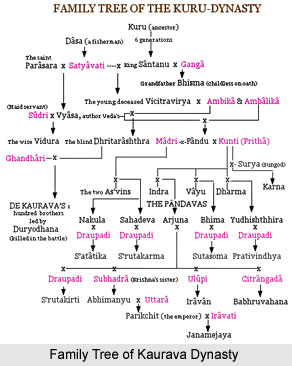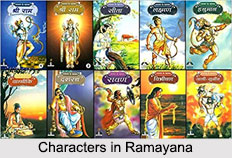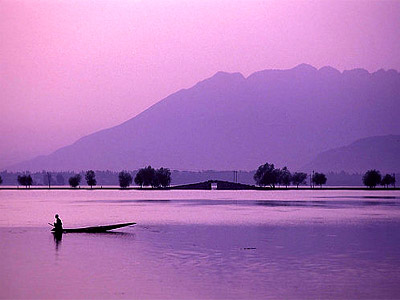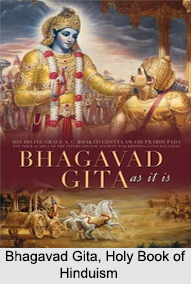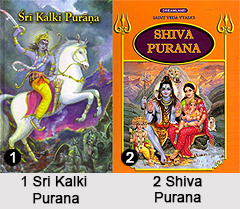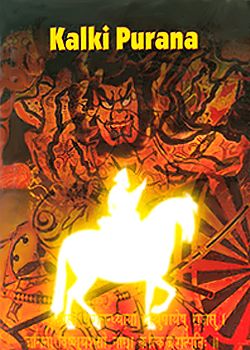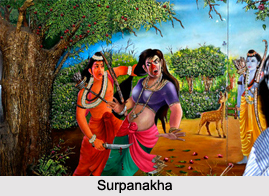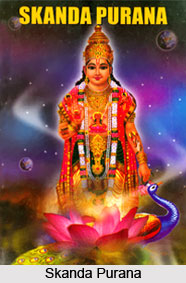 The Skanda Purana, the largest of the eighteen Indian Puranas, mainly deals with the life and deeds of the Kartikeya also known as Skanda, the son of Shiva-Parvati. It is so-called because it was narrated by Skanda himself. There is a great similarity between this Purana and the Kumarasambhava of Kalidasa. Being the thematic discussion about the life of Kartikeya, the son of Shiva, there is also found the descriptions of the Shaiva tradition of the Hemkuta region near Vijaynagar of Karnataka. The reason and the effects of the birth of Kartikeya constitute another important subject of discussion of the Skanda Purana. Kartikeya became the commander in chief of the God`s army and killed the demon Tarkasura. There are 81,000 verses in this Purana. It is considered to be auspicious if this book is given as a gift.
The Skanda Purana, the largest of the eighteen Indian Puranas, mainly deals with the life and deeds of the Kartikeya also known as Skanda, the son of Shiva-Parvati. It is so-called because it was narrated by Skanda himself. There is a great similarity between this Purana and the Kumarasambhava of Kalidasa. Being the thematic discussion about the life of Kartikeya, the son of Shiva, there is also found the descriptions of the Shaiva tradition of the Hemkuta region near Vijaynagar of Karnataka. The reason and the effects of the birth of Kartikeya constitute another important subject of discussion of the Skanda Purana. Kartikeya became the commander in chief of the God`s army and killed the demon Tarkasura. There are 81,000 verses in this Purana. It is considered to be auspicious if this book is given as a gift.
Origin of Skanda Purana
Despite whatever text has come down to us which is classified as the Skanda Purana, it is believed that the ancient Purana of this name, however, is probably entirely lost. Though there is a considerable number of more or less extensive works claiming to be Samhitas and Khandas of the Skanda Purana, and an almost overwhelming mass of Mahatmyas which give themselves out as portions of this Purana, only one, very ancient, manuscript contains a text which calls itself simply "Skanda Purana." Even this text, however, is scarcely identical with the ancient Purana. For, though it contains all manner of legends of Lord Shiva, especially of his battles with Andhaka and other demons, a few chapters on the hells and Samsara, and a section on Yoga, there is hardly anything in it that corresponds to the "five characteristics" of a Purana.
Content of Skanda Purana
The Skanda Puranas has seven parts- Maheshwar, Vaishnava, Brahma, Kashi, Avanti, Nagar and Prabhasa.
Maheshwar Khand contains a description of Daksh`s animosity towards Lord Shiva, the significance of Sati rites, virtues of worshipping Lord Shiva, Churning of the Ocean, the emergence of Ambrosia, Lord Brahma`s boon to Tarkasura, Lord Shiva`s test of Parvati`s devotion, the arrival of Saptarshis, birth of Kartikeya, Tarkasura killed by Kartikeya, virtues of performing fast on Shivaratri, Kartikeya`s sorrow, killing of Pralamb, Kaalbhiti`s great penance, Karandham`s Queries, significance of the Arunachal Shiva Linga and ultimately established Lord Shiva as the Sovereign creator.
Vaishnava Khand deals with the tales related to Lord Vishnu`s life and plays, his virtues, description of holy places of pilgrimage like Purshottam Tirth (Jagannath Puri), Badrikashrama, Heratkeshwar, Avantika Prabhasa, Dwarika etc., significance of fasting, glorious effects of ritual bathing in Kartik, Margasheersh and Vaisakha months, description of subjects like knowledge, asceticism, devotion, moral conduct, cleanliness, Varnashram (four phases of life), Pativrat (abidance to the spouse), Yagya, donation, expiation and Shraddha (offering to dead ancestors).
Apart from these two main parts the remaining Khandas likewise deal with the glorious exploits of Lord Shiva, Vishnu and Brahma.













